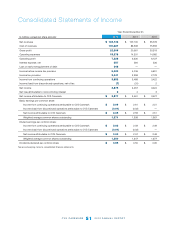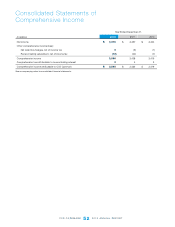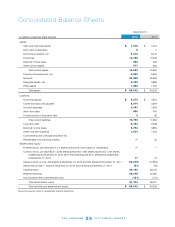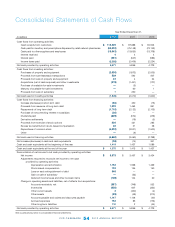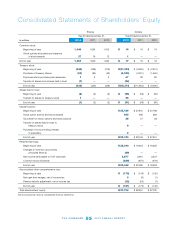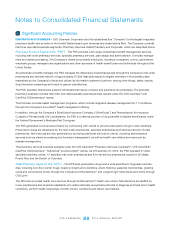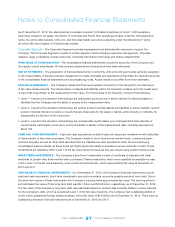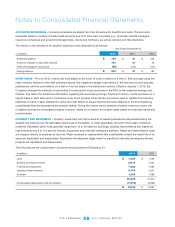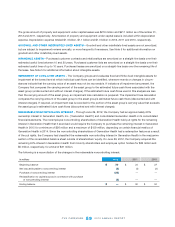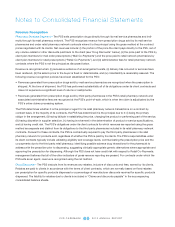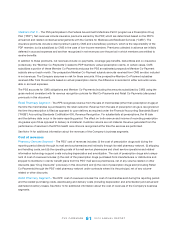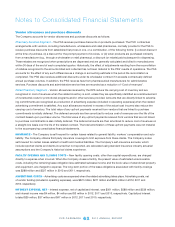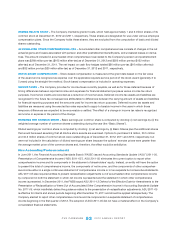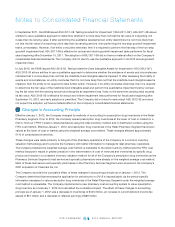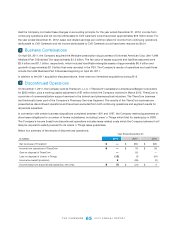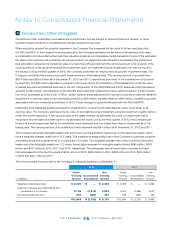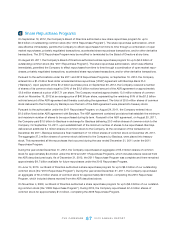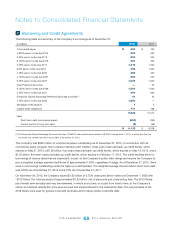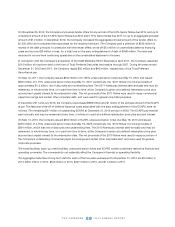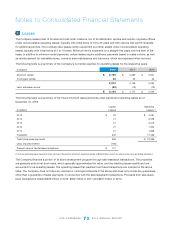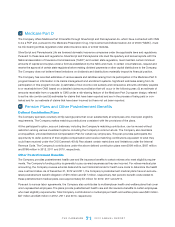CVS 2012 Annual Report Download - page 63
Download and view the complete annual report
Please find page 63 of the 2012 CVS annual report below. You can navigate through the pages in the report by either clicking on the pages listed below, or by using the keyword search tool below to find specific information within the annual report.CVS CAREMARK 2012 ANNUAL REPORT
61
Medicare Part D –
The PSS participates in the Federal Government’s Medicare Part D program as a Prescription Drug
Plan (“PDP”). Net revenues include insurance premiums earned by the PDP, which are determined based on the PDP’s
annual bid and related contractual arrangements with the Centers for Medicare and Medicaid Services (“CMS”). The
insurance premiums include a direct premium paid by CMS and a beneficiary premium, which is the responsibility of the
PDP member, but is subsidized by CMS in the case of low-income members. Premiums collected in advance are initially
deferred in accrued expenses and are then recognized in net revenues over the period in which members are entitled to
receive benefits.
In addition to these premiums, net revenues include co-payments, coverage gap benefits, deductibles and co-insurance
(collectively, the “Member Co-Payments”) related to PDP members’ actual prescription claims. In certain cases, CMS
subsidizes a portion of these Member Co-Payments and pays the PSS an estimated prospective Member Co-Payment
subsidy amount each month. The prospective Member Co-Payment subsidy amounts received from CMS are also included
in net revenues. The Company assumes no risk for these amounts. If the prospective Member Co-Payment subsidies
received differ from the amounts based on actual prescription claims, the difference is recorded in either accounts receiv-
able or accrued expenses.
The PSS accounts for CMS obligations and Member Co-Payments (including the amounts subsidized by CMS) using the
gross method consistent with its revenue recognition policies for Mail Co-Payments and Retail Co-Payments (discussed
previously in this document).
Retail Pharmacy Segment –
The RPS recognizes revenue from the sale of merchandise (other than prescription drugs) at
the time the merchandise is purchased by the retail customer. Revenue from the sale of prescription drugs is recognized at
the time the prescription is filled as opposed to upon delivery as required under the Financial Accounting Standards Board
(“FASB”) Accounting Standards Codification 605,
Revenue Recognition
. For substantially all prescriptions, the fill date
and the delivery date occur in the same reporting period. The effect on both revenue and income of recording prescription
drug sales upon fill as opposed to delivery is immaterial. Customer returns are not material. Revenue generated from the
performance of services in the RPS’s health care clinics is recognized at the time the services are performed.
See Note 14 for additional information about the revenues of the Company’s business segments.
Cost of revenues
Pharmacy Services Segment –
The PSS’ cost of revenues includes: (i) the cost of prescription drugs sold during the
reporting period directly through its mail service pharmacies and indirectly through its retail pharmacy network, (ii) shipping
and handling costs, and (iii) the operating costs of its mail service pharmacies and client service operations and related
information technology support costs including depreciation and amortization. The cost of prescription drugs sold compo-
nent of cost of revenues includes: (i) the cost of the prescription drugs purchased from manufacturers or distributors and
shipped to members in clients’ benefit plans from the PSS’ mail service pharmacies, net of any volume-related or other
discounts (see “Drug Discounts” previously in this document) and (ii) the cost of prescription drugs sold (including Retail
Co-Payments) through the PSS’ retail pharmacy network under contracts where it is the principal, net of any volume-
related or other discounts.
Retail Pharmacy Segment –
The RPS’ cost of revenues includes: the cost of merchandise sold during the reporting period
and the related purchasing costs, warehousing and delivery costs (including depreciation and amortization) and actual and
estimated inventory losses. See Note 14 for additional information about the cost of revenues of the Company’s business
segments.


